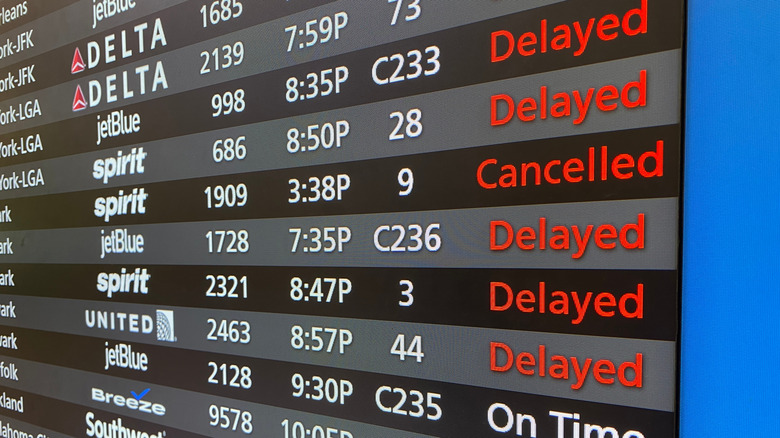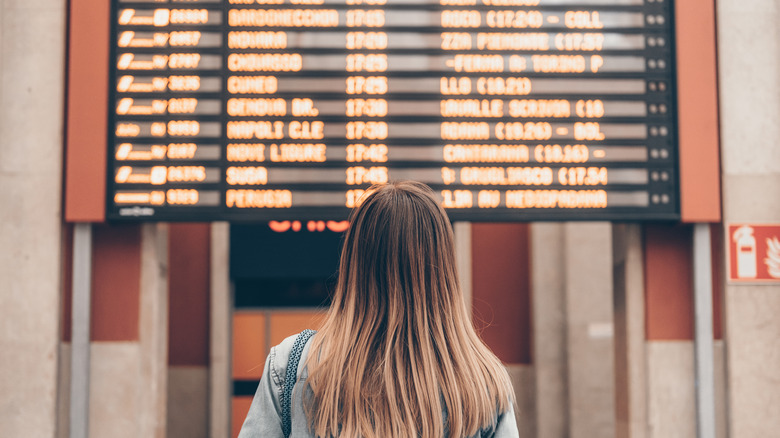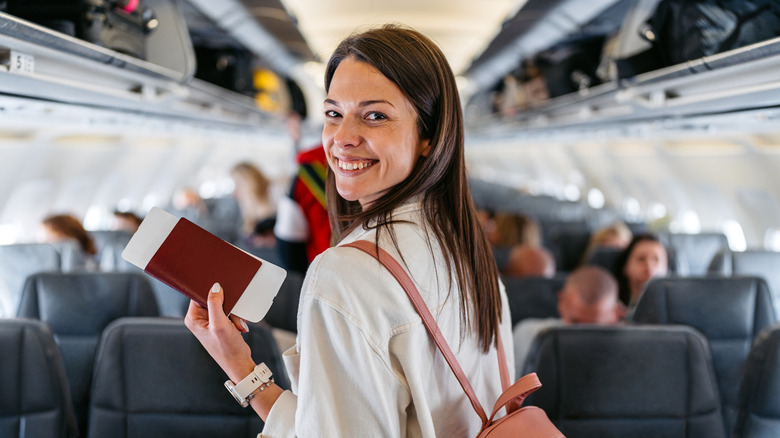Is Flying Standby The Secret To Avoiding Airport Delays? Here's What To Know
No traveler wants to experience the frustration of airport delays. You rush to arrive hours early, endure the security lines, and finally make it to your gate, only to find out your flight has been delayed indefinitely. Airports are already exhausting—crowded terminals, overpriced food, and hours spent aimlessly wandering between souvenir shops and waiting areas. The glow of departure boards rarely brings good news, and the monotony of scrolling through a phone can only last so long. But what if there was a way to bypass the waiting game? Flying standby offers a glimmer of hope with a heavy dose of luck, allowing flexible travelers to potentially escape the delay trap by hopping onto an earlier flight if a seat opens up.
Flying standby means asking for a seat on a new, different flight from the one originally booked — typically an earlier option, to avoid waiting around in the airport. However, standby travel has evolved significantly in recent decades. Gone are the days when anyone could show up at the airport and get on a last-minute flight without a pre-purchased ticket. Since the security changes following 9/11, passengers must already hold a purchased ticket for the day to be eligible for standby. Standby passengers are essentially playing a game of chance, hoping an open seat becomes available on a different, earlier flight before their originally scheduled departure. Airlines typically allow standby requests if a flight has been canceled, a passenger has been involuntarily bumped from an overbooked flight, or if someone wants to switch to an earlier or later flight. Each airline has its own regulations, and airlines and TSA are always making changes, so it's imperative that flyers look into and understand the specific rules before trying to fly standby.
How to fly standby
Navigating the standby flight process requires strategy, flexibility, and a lot of patience. Travelers must check their airline's standby policies and fees, which can range from $0 to $75 or even more. Passengers must have an original flight booked to the same destination they are hoping to fly standby to, and should aim to get on the standby list for the hopeful flight as soon as possible. This can be done by going to the gate directly or by calling the airlines ahead of time. Once on the standby list, passengers get to play the waiting game until the flight boards and they learn if their game of airport roulette has proven successful.
Signing up for an airline's loyalty program or elite status can significantly improve the odds of securing a seat, as these passengers are given priority over general travelers. Some elite status memberships ensure other passengers on the standby list aren't bumped ahead of you, securing a stronger hold on hopeful seats. Standby works best on routes with multiple daily fights to the same destination, as opportunity depends on the availability of opens seats. Standby is typically for domestic flights only, also limiting travel opportunities.
To improve the chances of success, standby travelers should be as prepared as possible. Arrive at the airport in the early morning to increase the likelihood of getting on an earlier flight before the plane fills up. Avoiding checked luggage and choose ideal carry-on bag choices, an important step to increase your flexibility (and it also reduces complications should you end up switching flights). Avoid traveling during peak times like weekends and holidays to increase the probability of open seats.
Quick tips for flying standby
While standby travel offers the possibility of reaching a destination sooner, it does come with drawbacks. The uncertainty of waiting for a standby seat can be stressful, especially for those with tight schedules or connecting flights. Passengers may spend hours at the airport only to find no seats available, meaning they must revert to their original booking. In some cases, standby flyers may even get stuck waiting until the next available flight, turning what was meant to be a time-saving strategy into an even longer airport stay. However, for those with flexible schedules, the potential benefits has the possibility to outweigh the risks.
Ultimately, flying standby can help some travelers avoid airport delays—but only if they are lucky and prepared. While it is not a guaranteed solution, following the right strategies can increase the chances of success. Checking airline policies, signing up for elite status and airline membership programs, arriving early, packing light, and maintaining patience and politeness with gate agents can all improve the likelihood of securing an earlier flight. Standby travel is not for those who need certainty, but for those with flexible schedules and a willingness to embrace the adventure — it can be a valuable airport hack to avoid airport delays and reach your destination ahead of schedule.


